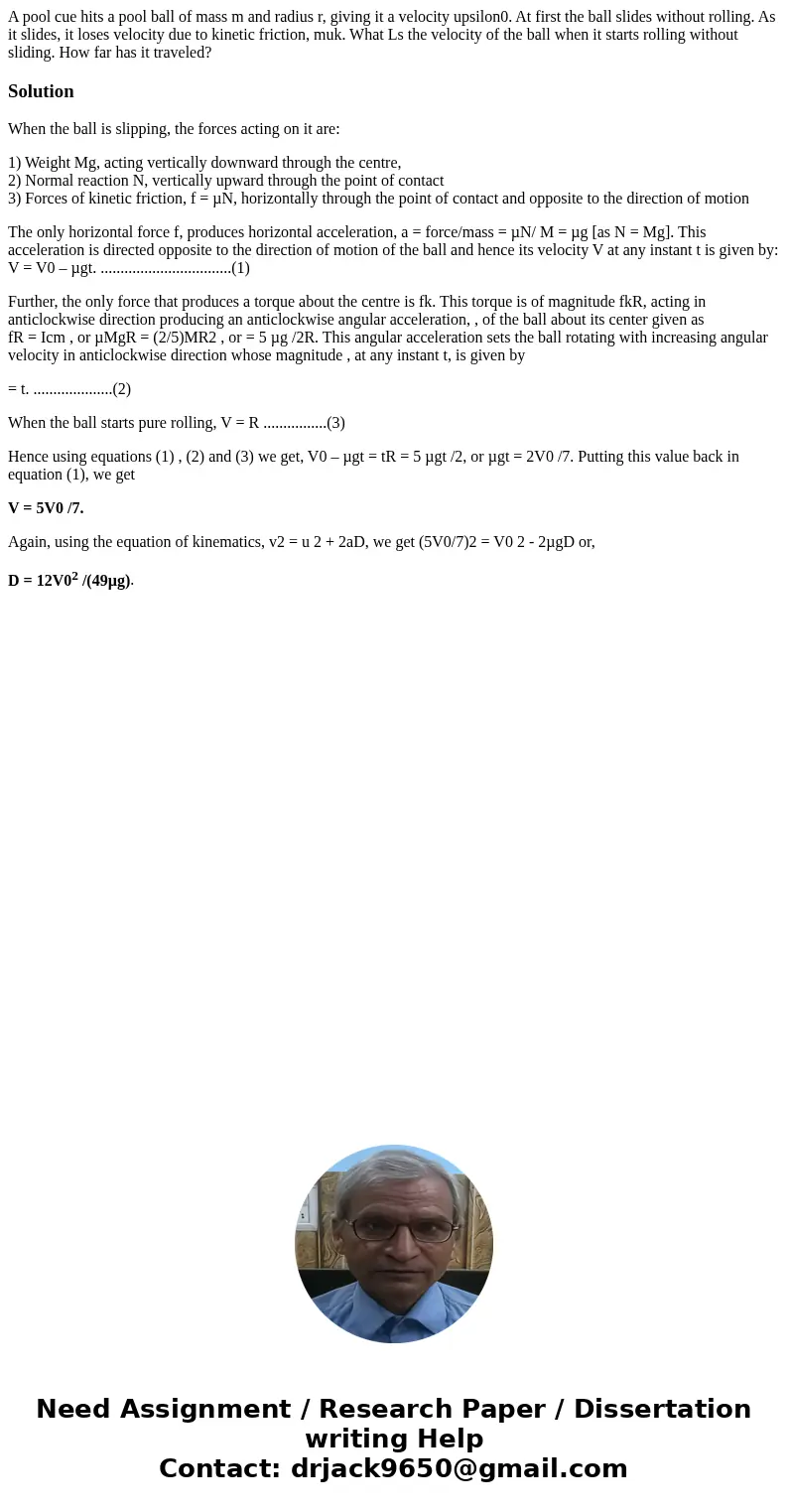A pool cue hits a pool ball of mass m and radius r giving it
Solution
When the ball is slipping, the forces acting on it are:
1) Weight Mg, acting vertically downward through the centre,
2) Normal reaction N, vertically upward through the point of contact
3) Forces of kinetic friction, f = µN, horizontally through the point of contact and opposite to the direction of motion
The only horizontal force f, produces horizontal acceleration, a = force/mass = µN/ M = µg [as N = Mg]. This acceleration is directed opposite to the direction of motion of the ball and hence its velocity V at any instant t is given by: V = V0 – µgt. .................................(1)
Further, the only force that produces a torque about the centre is fk. This torque is of magnitude fkR, acting in anticlockwise direction producing an anticlockwise angular acceleration, , of the ball about its center given as
fR = Icm , or µMgR = (2/5)MR2 , or = 5 µg /2R. This angular acceleration sets the ball rotating with increasing angular velocity in anticlockwise direction whose magnitude , at any instant t, is given by
= t. ....................(2)
When the ball starts pure rolling, V = R ................(3)
Hence using equations (1) , (2) and (3) we get, V0 – µgt = tR = 5 µgt /2, or µgt = 2V0 /7. Putting this value back in equation (1), we get
V = 5V0 /7.
Again, using the equation of kinematics, v2 = u 2 + 2aD, we get (5V0/7)2 = V0 2 - 2µgD or,
D = 12V02 /(49µg).

 Homework Sourse
Homework Sourse